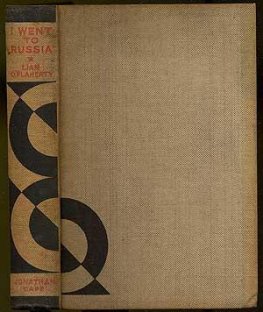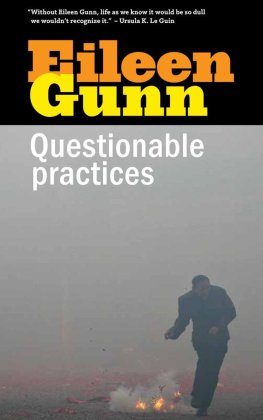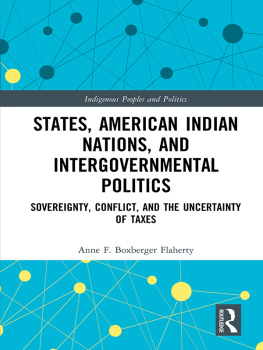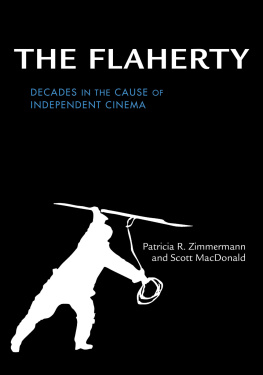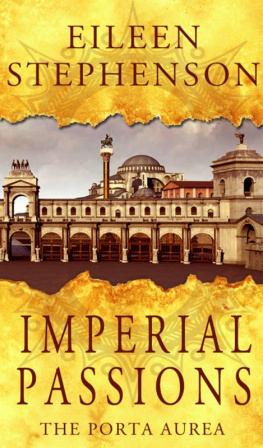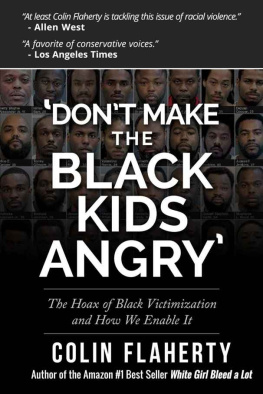Eileen T. Flaherty - The Perilous Step
Here you can read online Eileen T. Flaherty - The Perilous Step full text of the book (entire story) in english for free. Download pdf and epub, get meaning, cover and reviews about this ebook. year: 2020, publisher: King’s Bridge, genre: Home and family. Description of the work, (preface) as well as reviews are available. Best literature library LitArk.com created for fans of good reading and offers a wide selection of genres:
Romance novel
Science fiction
Adventure
Detective
Science
History
Home and family
Prose
Art
Politics
Computer
Non-fiction
Religion
Business
Children
Humor
Choose a favorite category and find really read worthwhile books. Enjoy immersion in the world of imagination, feel the emotions of the characters or learn something new for yourself, make an fascinating discovery.

- Book:The Perilous Step
- Author:
- Publisher:King’s Bridge
- Genre:
- Year:2020
- Rating:3 / 5
- Favourites:Add to favourites
- Your mark:
- 60
- 1
- 2
- 3
- 4
- 5
The Perilous Step: summary, description and annotation
We offer to read an annotation, description, summary or preface (depends on what the author of the book "The Perilous Step" wrote himself). If you haven't found the necessary information about the book — write in the comments, we will try to find it.
The Perilous Step — read online for free the complete book (whole text) full work
Below is the text of the book, divided by pages. System saving the place of the last page read, allows you to conveniently read the book "The Perilous Step" online for free, without having to search again every time where you left off. Put a bookmark, and you can go to the page where you finished reading at any time.
Font size:
Interval:
Bookmark:
I t is March 25, 2019. I am in Washington, DC, standing on the top step of the United States Supreme Court building with tears in my eyes. Today and tomorrow mark two days in my life that I will never forgetalthough, most days I have never forgotten, as the Irish can be that way. It is getting dark and I am really cold and should leave, but looking at the Capitol and taking it all in, I dont want to.
I cant move and cant believe that I am here.
Tomorrow I am being sworn into the United States Supreme Court Bar. Me, Eileen T. Flaherty, from Burbank (not California), Illinois, the kid that was never supposed to make it, let alone make it here.
W here I lived in Burbank, kids didnt go to preschool to learn because the thought was that you shouldnt be sending kids to school too early. Kids were supposed to be kids, and school and responsibilities would come soon enough.
There was one school that offered kindergarten, and you could go there the year before you were supposed to start the first grade. My brother had gone there two years before, and now it was my turn.
The first day was scary, and then it was fine, and it was fun. We didnt learn anything, as it was more socialization to prepare kids for the first grade. There were toys but no books, and each kid had to bring a blanket because we got nap time. It also was only a few days a week, and about two hours, including nap time, because parents at that time didnt want kids to be overburdened. Things have obviously changed, with kids now expected to have read Moby Dick and learned algebra before kindergarten.
It was the summer before the first grade, and I was very excited to start my new real school. In my neighborhood, there were two schools that parents could choose from. There was the Catholic school, St. Albert the Great, and the public school, Kennedy. The Catholics sent their kids to the Catholic school, and the publics sent their kids to the public schoolthere were no charter schools or magnet schools. It was all pretty simple, and nobody had to interview to get into schools or compete for spots.
I was happy to be going to St. Albert the Great. It sounded so important. I felt sorry for the kids who must have been going to some other St. Albert school, as it wasnt the Great one like mine.
In the Catholic schools, kids had to wear uniforms. You had to go to the specific store and buy exactly what was required. For the first graders, the girls had to wear a plaid jumper with an emblem on the right chest that said SAG (for St. Albert the Great) and a white short-sleeved shirt. We had to wear dress shoes, and white socks were a must. The boys had to wear blue pants and a short-sleeved white shirt. They had little clip-on ties, which had the same plaid as the girls jumpers.
There was no fashion allowed, except for the first few days of school when it was so hot you could wear anything your parents wanted, within reason, because there was no air-conditioning. For the first week, we got to wear our own clothes. I had a few outfits that my mom had gotten for me, and I thought I looked very nice. It was important because I wanted the nuns to like me.
There were two classes in the first grade, each with its own Catholic nun running the show. Nuns were feared and revered. One class had around forty-eight kids, and the other had about fifty, with only one nun for each class. The desks were wooden and uncomfortable. The nun for my class was Sister Josephine Carol or something like that. I thought it was cool that they got to pick their names, and they could have more than one. We never knew if they even had last names.
The days were long and the classes were big, but kids mostly didnt get out of line. Parents revered the nunsif a kid did something wrong, or at least wrong in the nuns eyes, the parents typically sided with the nun and the kid got into more trouble at home. There was no second set of eyes or appeal process. And it was mostly the boys that got into trouble.
Nuns could yell, hit kids, and put them in the broom closet with the lights off to scare them, and they got away with it. These were criminal acts, but we were too young to know at the time. There were probably some nice and kind nuns. But in life, most people like me remember most the bad actors.
Since we were only six-years-old in the first grade, we mostly didnt get into trouble. As we got older, it was another story. The nuns always seemed to be gunning to find someone, usually one of the boys, who did something to get into trouble, even if you didnt know what the kid had done wrong.
There was one punishment where one of the boys would have to stand in the front of the room in view of all the other kids with his arms extended, and the nun would put a heavy book in each hand. The boy wasnt allowed to lower his arms for a long time or the punishment would be worse. Kids cried and were humiliated, and the nuns seemed satisfied with that outcome. Pain and humiliation, a nice daily double, they must have thought. Although I was young, none of that seemed right to me, so I kept very quiet. I didnt want to get noticed by the nuns anymore.
With all of the current gun violence and schools being attacked by student gunmen, there are some people who believe that teachers should be armed with guns in order to protect the students. I dont agree with that at all and am pretty sure that if the nuns who taught my first- or second-grade classes were packing weapons, some of the boys would not have made it past that grade. And most of the Catholic families had a lot of kids, so what was one less?
Grammar school was kind of what incarceration must be like: ugly uniforms, set schedule, nobody could get out of line, and random punishment for practically nothing, or maybe even nothing at all.
The first grade defined what my education would be like until I went to college and definedand limitedsome of my career choices. You see, I am the kid who got written off and thrown away in the first grade and was never expected to ever become anybody.
In the first-grade classroom, everything was written by the nun on the chalkboard in the front of the room. I was seated toward the back. I dont know if the nun intentionally put the boys in the front, but they all seemed to be there. Maybe she thought that the boys education was more important and that the girls would be housewives anyway.
Back in the early 1960s, they didnt do eye tests on kids before they started school. What nobody realized until after starting the first grade was that I couldnt see the writing on the chalkboard. Although able to hear fine, I couldnt see the board. I learned to read and spell by listening, but that didnt work for math.
When someone at last realized that I couldnt see the writing on the chalkboard, I went to the eye doctor and got glasses. I was very nearsighted, which means I couldnt see the faraway chalkboard. The shiny blue metal frames with the wings seemed to be the most beautiful to me. They were dorky looking, but I only realized that later when I got new ones that were light brown. Apparently my first glasses were not strong enough for me to see, so I got new ones about a year later.
By the time my eyesight issue was resolved, it was too late for me. Math is a subject where you need to learn the simple stuff like addition and subtraction before you can move on to the more complicated areas like fractions and division. Its like building blocksyou need a foundation or they will keep falling over. Since I didnt have that strong foundation, I was lost, and the class was too big for anyone to help me catch up.
The first-grade classes were broken up into four tracks, and each kid was assigned to a track based on the nuns assessment of their intelligence. The tracks were based on the letters READ. The nuns thought they were so clever and had scrambled the letters, thinking the kids wouldnt figure it out, but we all did. The smartest kids, according to the nuns, were in the E track, the next smartest were in the A track, then came the D track, and lastly the R track.
Font size:
Interval:
Bookmark:
Similar books «The Perilous Step»
Look at similar books to The Perilous Step. We have selected literature similar in name and meaning in the hope of providing readers with more options to find new, interesting, not yet read works.
Discussion, reviews of the book The Perilous Step and just readers' own opinions. Leave your comments, write what you think about the work, its meaning or the main characters. Specify what exactly you liked and what you didn't like, and why you think so.


